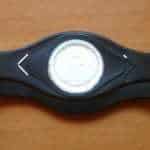Researchers from the University of York have found that these outlets trigger happy memories. According to the results of recent research that have been published in a significant report, tablets, television and music can all provide people who spend a lot of time on their own with a “comforting friendly face”, particularly among those who are isolated as a result of disability or illness or who are recently bereaved. The WaveLength charity worked with the University of York in researching these ways to alleviate loneliness. The research found that “artificial…
Read MoreTag: mobile health devices
Case study shows mobile technology connection between doctors and patients
Gadgets are helping to improve the link between physicians and people who have experienced brain injuries. According to a new case study, mobile technology can be exceptionally useful in advanced diagnostic imaging in the efforts to ensure that a patient and a doctor remain connected throughout concussion and brain injury treatment situations. This use of mobile health tech could assist in improving the decision support environment’s focus on the patient. The case study revealed ways in which mobile technology can be used within the diagnostic imaging environment, but that its…
Read MoreWearables are owned by 15 percent of consumers who know about them
A recent Connected Life Report from Nielsen has revealed that many people who know the term are wearing one. According to the recently published Nielsen Connected Life Report, among the people who actually know what wearables are, and understand the term itself, fifteen percent already own and use one. The survey conducted by Nielsen involved the participation of 3,956 respondents. The research itself was done, last year in November. This is interesting because there has been a great deal of movement in the wearables industry since that time. There have…
Read More


